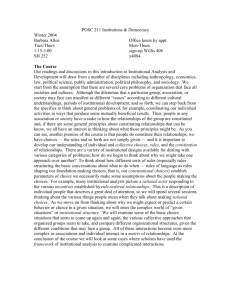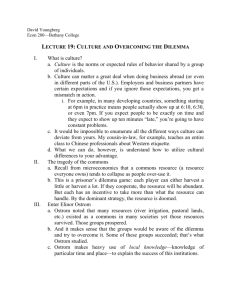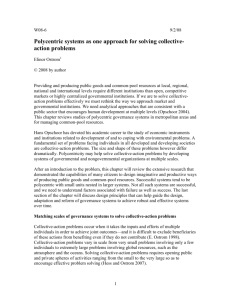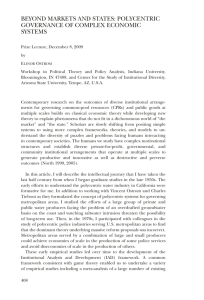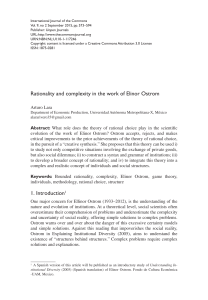media and elecpol96
advertisement
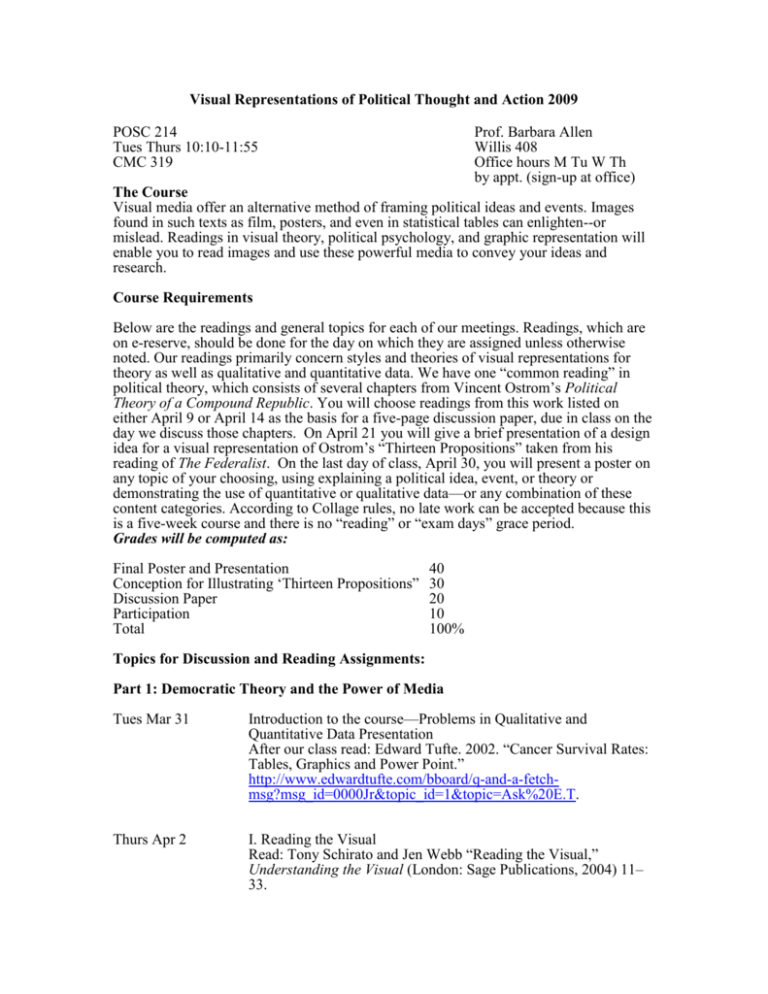
Visual Representations of Political Thought and Action 2009 POSC 214 Tues Thurs 10:10-11:55 CMC 319 Prof. Barbara Allen Willis 408 Office hours M Tu W Th by appt. (sign-up at office) The Course Visual media offer an alternative method of framing political ideas and events. Images found in such texts as film, posters, and even in statistical tables can enlighten--or mislead. Readings in visual theory, political psychology, and graphic representation will enable you to read images and use these powerful media to convey your ideas and research. Course Requirements Below are the readings and general topics for each of our meetings. Readings, which are on e-reserve, should be done for the day on which they are assigned unless otherwise noted. Our readings primarily concern styles and theories of visual representations for theory as well as qualitative and quantitative data. We have one “common reading” in political theory, which consists of several chapters from Vincent Ostrom’s Political Theory of a Compound Republic. You will choose readings from this work listed on either April 9 or April 14 as the basis for a five-page discussion paper, due in class on the day we discuss those chapters. On April 21 you will give a brief presentation of a design idea for a visual representation of Ostrom’s “Thirteen Propositions” taken from his reading of The Federalist. On the last day of class, April 30, you will present a poster on any topic of your choosing, using explaining a political idea, event, or theory or demonstrating the use of quantitative or qualitative data—or any combination of these content categories. According to Collage rules, no late work can be accepted because this is a five-week course and there is no “reading” or “exam days” grace period. Grades will be computed as: Final Poster and Presentation Conception for Illustrating ‘Thirteen Propositions” Discussion Paper Participation Total 40 30 20 10 100% Topics for Discussion and Reading Assignments: Part 1: Democratic Theory and the Power of Media Tues Mar 31 Introduction to the course—Problems in Qualitative and Quantitative Data Presentation After our class read: Edward Tufte. 2002. “Cancer Survival Rates: Tables, Graphics and Power Point.” http://www.edwardtufte.com/bboard/q-and-a-fetchmsg?msg_id=0000Jr&topic_id=1&topic=Ask%20E.T. Thurs Apr 2 I. Reading the Visual Read: Tony Schirato and Jen Webb “Reading the Visual,” Understanding the Visual (London: Sage Publications, 2004) 11– 33. II. The Idea of Institutional Design Read: Vincent Ostrom, “Constitutional Choice” and “Some Rudiments of Political Design” in Political Theory of a Compound Republic. (Lanham, MD: Lexington Books, 2008) 49–57 and 59– 71. Rec (BA will present from): Vincent Ostrom, “Federal Structures and their Implications,” in Political Theory of a Compound Republic. (Lanham, MD: Lexington Books, 2008) 87–109. Tues Apr 7 I. Political Communication and Visual Representation Read: Susan Sontag. “The Image–World” in Visual Culture: The Reader, Jessica Evans and Stuart Hall, eds. (Thousand Oaks, CA: Sage Publications, 1999) 81–94. Tony Schirato and Jen Webb “Communication and the Visual,” Understanding the Visual (London: Sage Publications, 2004) 57– 80. Guido Álvarez “Obama, McCain Fictional Design Competition,” August 2, 2008” From HyperScholar Blog TypePoetry November 2, 2008 Found in Context at: http://thefishery.typepad.com/the_fishery/teaching/ II. Federal Institutional Arrangements Read: Constitutional Choice and Constitutional Development Barbara Allen and Vincent Ostrom, “Constitutional Choice and Constitutional Development,” ” in Political Theory of a Compound Republic. (Lanham, MD: Lexington Books, 2008) 133–79. Thurs Apr 9 I. Color Theory and Visual Narrative and Metaphor Read: Annie Dillard, “Seeing,” in Seeing and Writing 3, Donald McQuade and Christine McQuade, eds. (Boston: Bedford/St. Martin’s Press, 2004) 108–117. Look at Art Work: Tibor Kalman 1993 ads for Benetton “Colors” AKA “What if…” Interview with Kalman by Brad Weiner, “Color Him a Provacateur” Wired http://www.wired.com/wired/archive/4.12/kalman_pr.html Guido Álvarez, “Exerpts from an Essay on SKAM Works & Benetton Ad Campaigns” HyperScholar Blog TypePoetry November 2, 2008 Complete Essay at: http://www.thefishery.typepad.com/ Tony Schirato and Jen Webb “Visual Narratives” Understanding the Visual (London: Sage Publications, 2004) 81–104. Tues Apr 14 I. Centralization vs. Federalism Read: Barbara Allen and Vincent Ostrom, “The Twentieth-Century Break with The Federalist Tradition” 181–225. II. Federalism in the 21st Century Read: Barbara Allen and Vincent Ostrom “The Constitutional Level of Analysis” in Political Theory of a Compound Republic. (Lanham, MD: Lexington Books, 2008) 227–247. Discussion Papers Due Thurs Apr 16 I. Visual Regimes—a Critique of Power Point Read: Edward Tufte. “Power Point is Evil” http://www.wired.com/wired/archive/11.09/ppt2_pr.html Edward Tufte, “Power Point Does Rocket Science” http://www.edwardtufte.com/bboard/q-and-a-fetchmsg?msg_id=0001yB&topic_id=1 NStephen Jay Gould, “The Median Isn’t the Message” http://www.edwardtufte.com/tufte/gould Tony Schirato and Jen Webb “Normalizing Vision,” Understanding the Visual (London: Sage Publications, 2004) 131–48. II. Workshop 1: Presentations of Theory and Qualitative Data Bring Ideas to Class for Illustrations of Vincent Ostrom’s “Thirteen Propositions” Look at Art Work: Leong Ka Tai, “The Wu Family” in Seeing and Writing 3, Donald McQuade and Christine McQuade, eds. (Boston: Bedford/St. Martin’s Press, 2004) Tues Apr 21 I. Present Design Ideas and Explanations for Ostrom’s 13 Propositions II. Workshop 2: Presentations of Theory and Qualitative Data Thurs Apr 23 Workshop 3: Presentation of Quantitative Data Read: Austin Bradford Hill, “The Environment and Disease: Association or Causation?,” Proceedings of the Royal Society of Medicine, 58 (1965), 295-300. Tues Apr 28 Workshop 4: Presentation of Quantitative Data Thurs Apr 30 Visual Representations of Political Ideas and Actions ***********Final Projects Presented in Class**********



